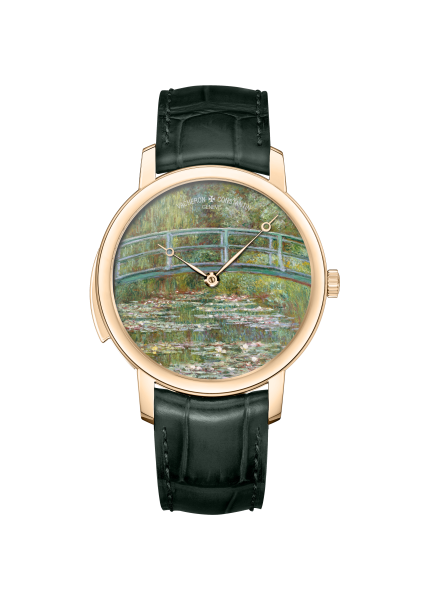
Monet Bridge Over a Pond of Water Lilies recreated on the dial of this Vacheron Constantin Masterpiece on the Wrist watch.
Just about a week or so ago, I was treated to one of the most beautiful experiences: a private tour of the Metropolitan Museum of Art when the museum was closed to the public. It was an awe-inspiring tour of some of the world’s most incredible paintings and sculptures in history. Vacheron Constantin and The MET organized the event for a select few journalists so we could indulge in the artwork that serves as the basis for the kickoff of the Masterpiece on your Wrist program in cooperation with The MET.
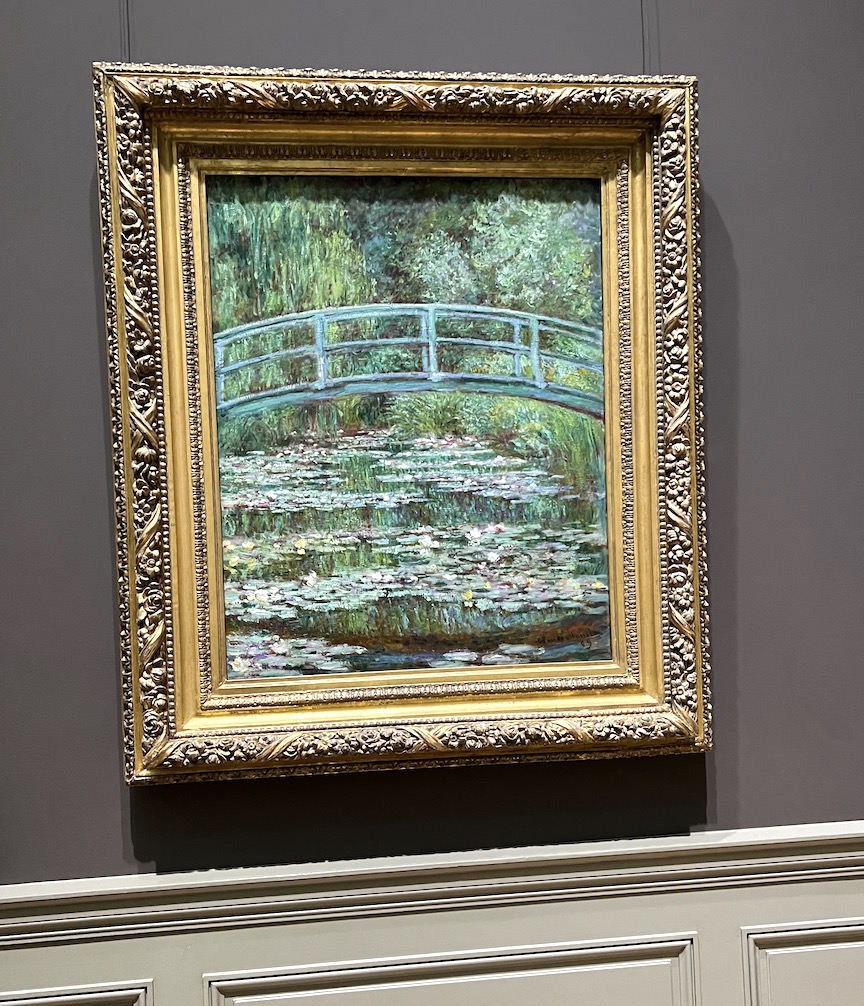
Bridge over a Pond of Water Lilies, Claude Monet, 1899
This example features a detail from an oil painting by Claude Monet (French, 1840–1926) representing the wooden footbridge over his famed water-lily pond in Giverny. A passionate horticulturist, Monet purchased the land in 1893 with the intention of building something “for the pleasure of the eye and also for motifs to paint.” This painting in The MET collection is part of a series of views of the bridge and pond. It gives prominence to the water lilies and their reflections on the pond thanks to its vertical format. Photo: R. Naas
The opportunity to be surrounded in this world-class museum by just a handful of people was amazing. The hallways with their sculptures and art were breathtaking, and being given a private explanation of certain artists and their work was so indulgent that it was almost over-whelming. In some instances, I could envision myself standing right inside the scene the artist had pained. This is especially true of the lily ponds and gardens that Monet painted so masterfully. I was swayed by the force of the oceans during a storm that was captured magnificently (and maybe somewhat terrifyingly) by Winslow Homer in the late 19th century.
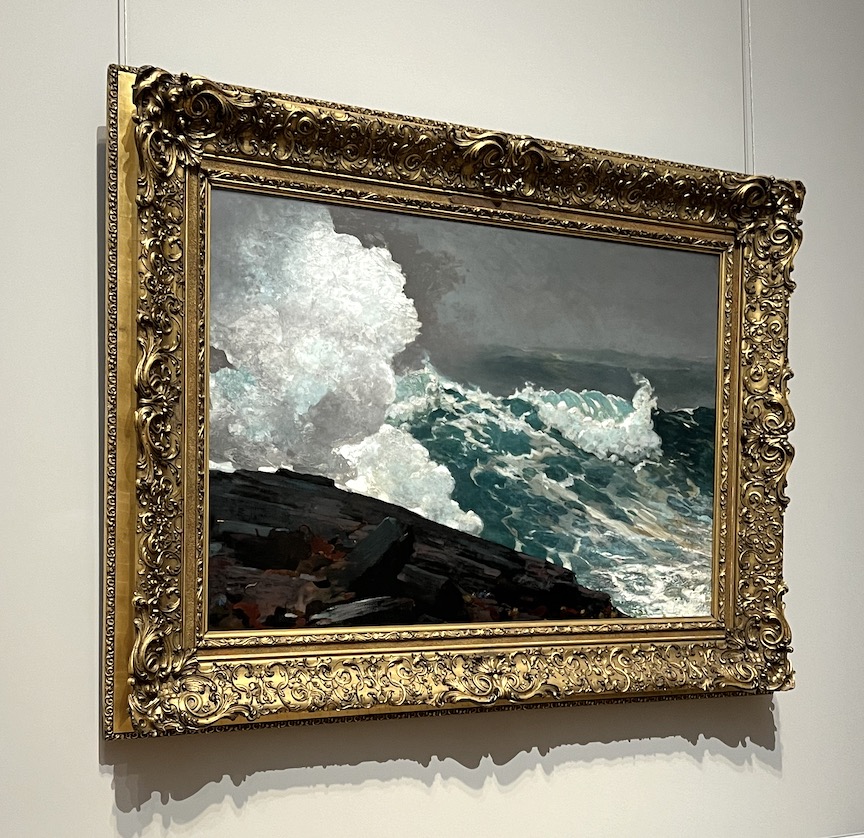
Northeaster, Winslow Homer, 1895 reworked by 1901
This example features a detail of Northeaster, one of Winslow Homer’s (American, 1836–1910) seascapes painted at Prout’s Neck, Maine, where he lived and worked in the last decades of his life. Homer studied the rugged coast and churning ocean across the seasons, in varying conditions and at different times of day, painting a series of images that conveyed the timeless power and majesty of the sea. Critics admired this rendering of a particularly fierce winter storm for its “large atmosphere of great natural spaces unmarked by the presence of puny man.”
Photo: R. Naas
I grew up in a family of artists, so being able to stand in front of a Van Gogh or Monet and study it from all angles without anyone pushing by me or talking away, was especially gratifying. I could immerse myself in the paintings that Vacheron Constantin and The MET chose for its first venture together and get a deeper insight into each artist’s style – an aesthetic that the master artisans at Vacheron Constantin would emulate to the fullest.
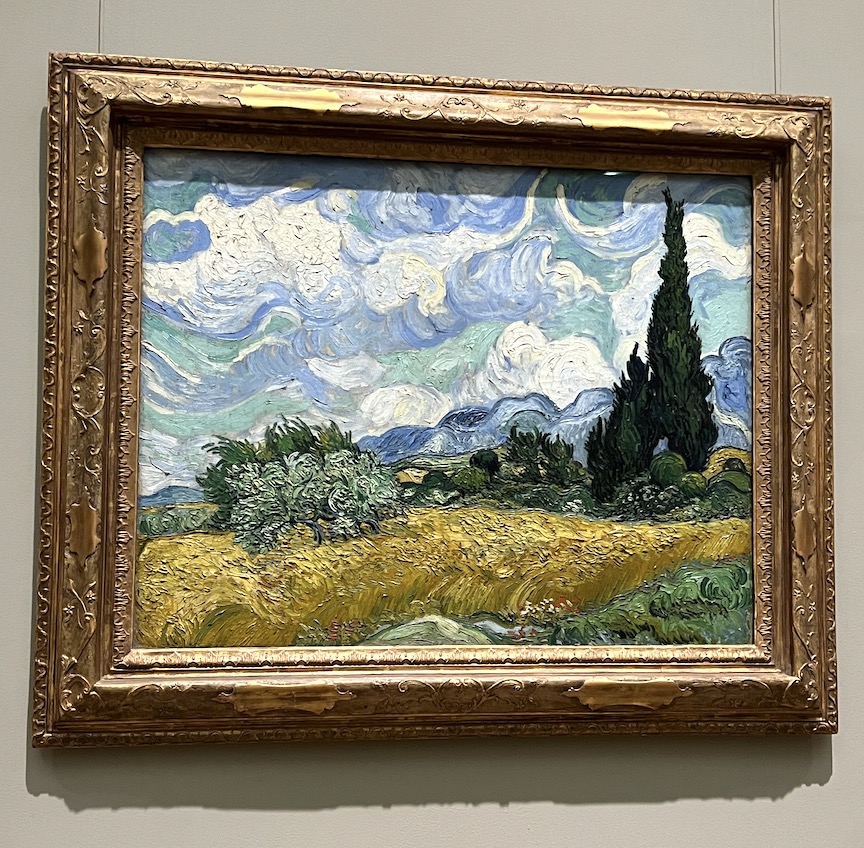
Wheat Field with Cypresses, Vincent van Gogh, 1889
This example features a detail of a masterpiece painted in oil on canvas by the famous artist Vincent van Gogh (Dutch, 1853–1890) shortly after he took refuge at the asylum in Saint-Rémy in 1889. Setting up his easel in the Provençal countryside, he captured the towering cypresses that hold forth over golden windswept fields of wheat, the swaying olive trees, the Alpilles mountains, and clouds swirling in the skies. He regarded it as one of his “best” summer landscapes, and repeated the composition in a summer drawing and two later paintings made in his studio that fall. Photo: R. Naas
For the world’s oldest continually operating watch brand, the thrill of its museum collaborations is to embrace the finest art and the emotions it evokes by turning masterpieces within those walls into masterpieces on the wrist. It is a challenge the brand has conquered several times over. Now, via its “Masterpiece on your Wrist” program (which the brand originally launched in 2019), the venerable brand offers clients single, unique piece Les Cabinotiers watches boasting dials re-interpreted from The Metropolitan Museum of Art’s (MET) finest works.
Essentially, Vacheron Constantin partners with The MET to connect clients with the museum’s curators to walk through the works of art and sculpture in the museum, and even peruse the archives, to select what work they would like to have replicated onto the watch dial. There are some parameters, but the possibilities are almost endless. Once the art for the dial is selected, the client can choose from four case styles, multiple case metals, and three movements – ranging from time-only caliber to a minute repeater tourbillon – for their own unique timepiece.
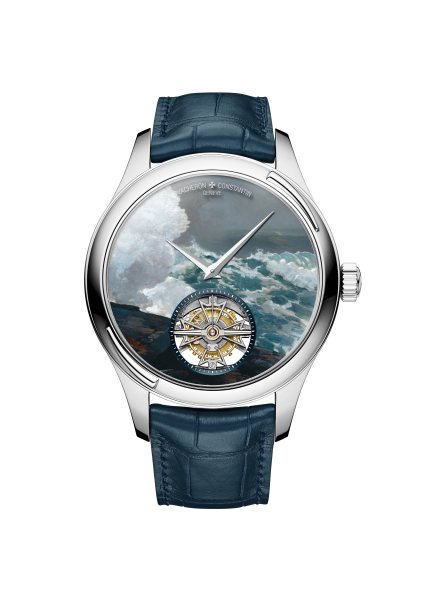
Vacheron Constantin Masterpiece on the Wrist x The MET, Winslow Homer
Clients can also select the particular type of Métiers d’Arts technique they would like Vacheron Constantin’s master artisans to employ. As such, the brand also offers clients the ability, when commissioning their unique piece, to indulge in a trip to Vacheron Constantin’s Manufacture in Geneva where they can witness the dials being painted and talk with the master artisans.
However, to help convey the scope, depth and breadth of this program, Vacheron Constantin’s artisans have worked closely with The MET to choose four examples to translate onto watch dials. The first four works include the Wheat Field with Cypresses painting by Vincent van Gogh in 1889 in oil on canvas, Bridge over a Pond of Water Lilies by Claude Monet that was painted in 1899 of the footbridge over his famed water-lily pond on his property in Giverny, Northeaster by American artist Winslow Homer that features a Northeaster storm over the ocean painted at Prout’s Neck, Maine in 1895 and reworked in 1901.
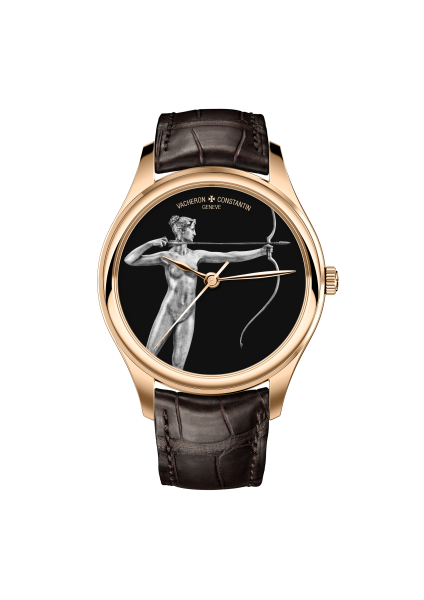
Vacheron Constantin Masterpiece on the Wrist x The MET, Diana
The fourth example is the gilded bronze sculpture of Diana by Augustus Saint-Gaudens from 1893-94. It depicts the Roman goddess of the moon on the hunt with her bow and arrow. The sculpture at the museum is a half-size model of the version that was on top of the original Madison Square Garden’s towner in New York from 1893 until 1925 when it was demolished.
Ultimately, customers can choose one of these four, or select another work of art. They can then set about selecting the art technique to be used on the dial. Essentially, there are several types of Métiers d’Arts methods employed in the making of the dials based on these masters. They include miniature enamel painting and Grisaille enamel. In each case, the techniques involved include applying multiple layers of color to the dial. In miniature enamel painting, each layer of paint must be fired in a kiln – risking bubbles in the paint or other damage resulting in a useless dial and the start of another. Even when the dial is complete, a final layer of translucency is added to extricate more brilliance and depth. This method is vital for reproducing details, colors and brushstrokes that the masters implemented on their original paintings.

Vacheron Constantin Masterpiece on the Wrist x The MET Van Gogh watch.
In Grisaille enamel work, the artist takes a mono-chromatic approach to the reproduction of the masterpiece. This particular art endows the dial with depth and dimension – the perfect technique for emulating a sculpture. The dial typically starts with black and builds up translucent layers of Limoges white enamel to obtain varying shades of gray, as well as a three-dimensional appeal.
While Vacheron Constantin suggests the Grisaille technique for the sculpture and miniature enamel paining for the paintings, the client can ultimately choose the style he or she wants used for the dial painting. Additionally, the client has a host of other choices when it comes to customizing his or her unique watch. In fact, this program, especially as Vacheron Constantin has set it up with the art works from The Met, may well be the world’s most luxurious customized watch program. Certainly, it is one of the most alluring.
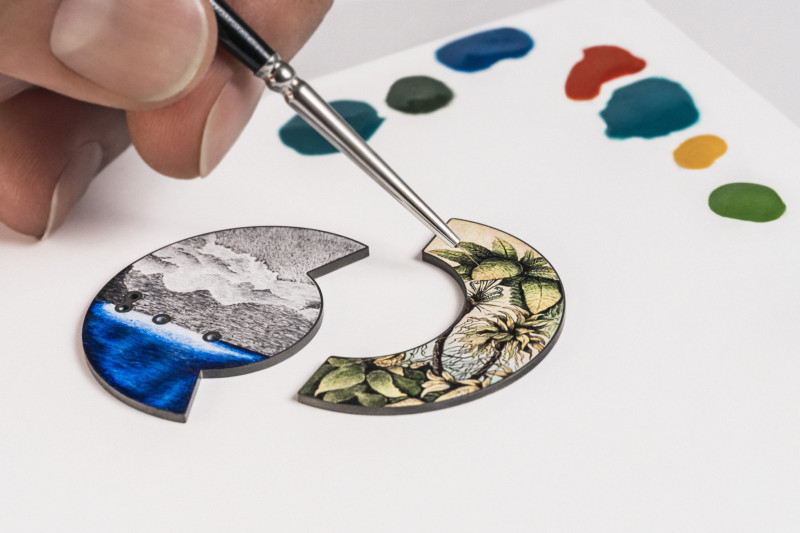
Ultimately, clients can choose which work of art from The MET they want reproduced on the dial of the Vacheron Constantin Masterpiece on the Wrist watch.
As mentioned, for the Masterpiece on the Wrist program with The Met, the client can choose not only the art he or she wants on the dial, but also other watch elements. One of the most significant is that the client can choose from three different movements to be used inside the watch.
Among the calibers being offered. One is the 2755 TMR manual winding movement unveiled in 2017 and consisting of 471 parts. It offers minute repeater, tourbillon hours, minutes and small seconds on the tourbillon, as well as 58 hours of power reserve. The second movement offered is the 1731 manual-winding caliber with 265 parts and 65 hours of power reserve. It offers minute repeater along with hours and minutes. It is equipped with a silent flying strike governor that regulates the rate of the hammers as they strike the gongs for ultimate clarity and harmony. The third offering is a self-winding movement with 182 parts and 40 hours of power reserve. It offers hours, minutes and central seconds. All movements boast the Hallmark of Geneva certification.
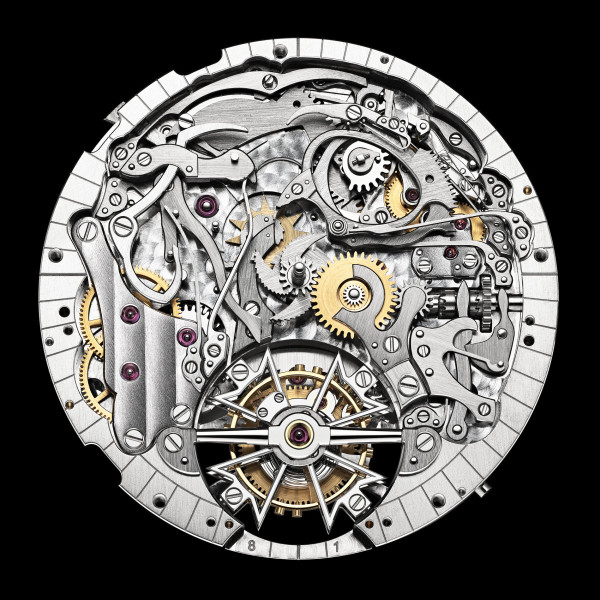
Clients can also choose which one of four movements they want inside the watch.
Other options clients can customize in their watch includes the precious metal for the case and the strap. Each watch will be unique and will be sold with a certificate of authenticity from both Vacheron Constantin and the MET.
The “Masterpiece on your Wrist” project in cooperation with The MET is the result of a multi-year partnership established in 2023 and these are the first watches to be unveiled in the partnership. The main goal for both the museum and the brand is to safeguard the arts and to continue to pass on the knowledge and expertise for the fine arts. This is particularly important in watchmaking where miniature painting and enamel work is truly a luxury passed from generation to generation.
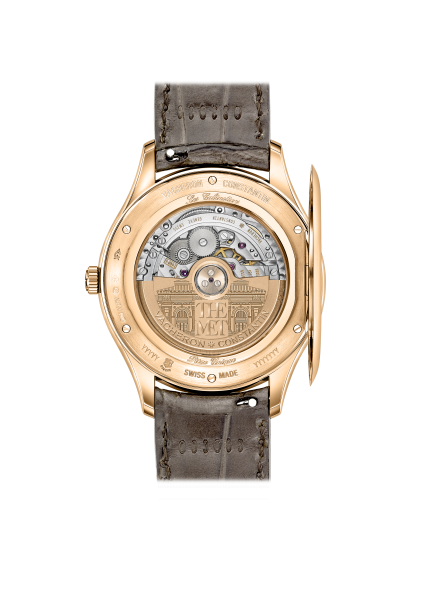
The case back of one of the four example Vacheron Constantin Masterpiece on the Wrist watches. The half-hunter case back opens to reveal the movement within.
Other mission-driven projects on the drawing board include an artist-in-residency program and additional educational initiatives. Each watch will be unique and will be sold with a certificate of authenticity from both Vacheron Constantin and The MET.
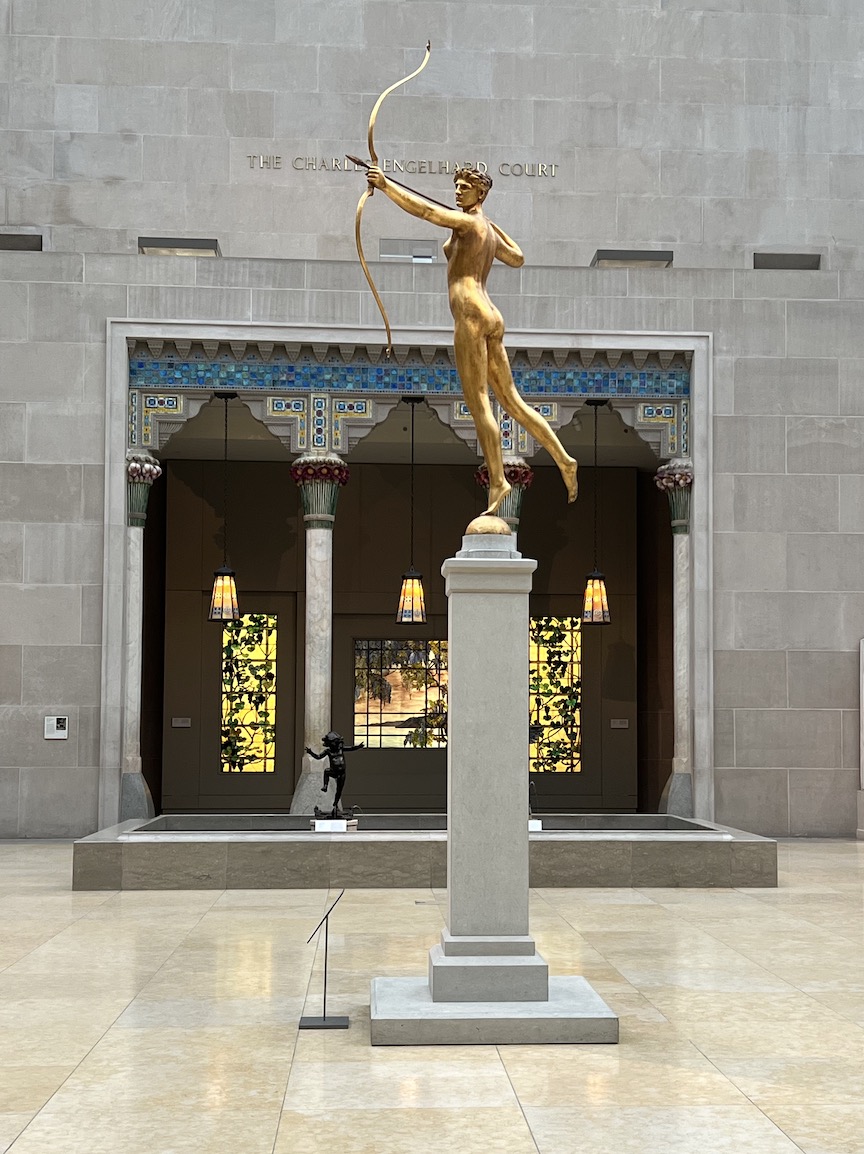
Diana, Augustus Saint-Gaudens, 1893-94
This example features a detail from Augustus Saint-Gaudens’s (American, 1848–1907) gilded bronze sculpture Diana that depicts the Roman goddess of the moon and the hunt about to release her arrow. For his only female nude, Saint-Gaudens accentuated the figure’s simple, elegant lines and strong silhouette. The MET sculpture is a half-size model of a 13-foot-high Diana that was on top of Madison Square Garden’s tower from 1893 until the building was demolished in 1925. Saint-Gaudens capitalized on the fame of this iconic New York landmark by producing reductions in various heights.
Photo: R. Naas
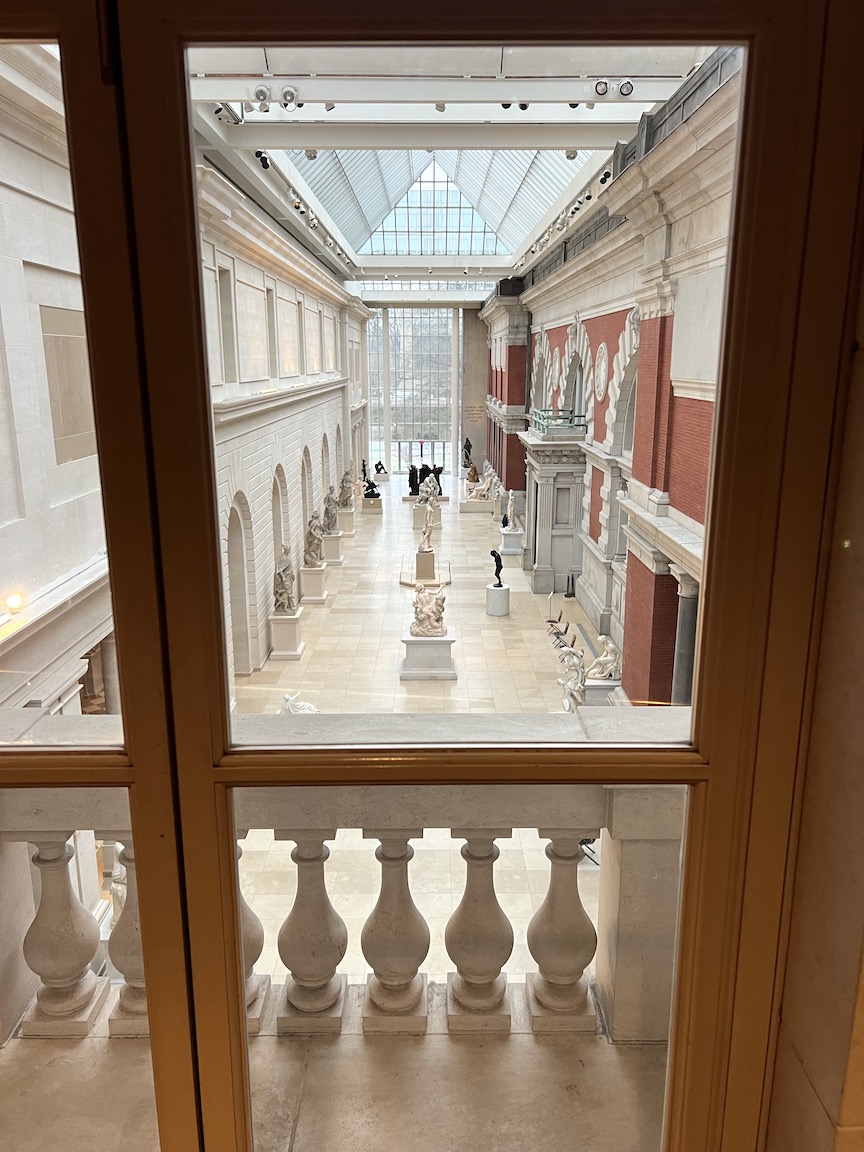
The Metropolitan Museum of Art (photo: R. Naas)
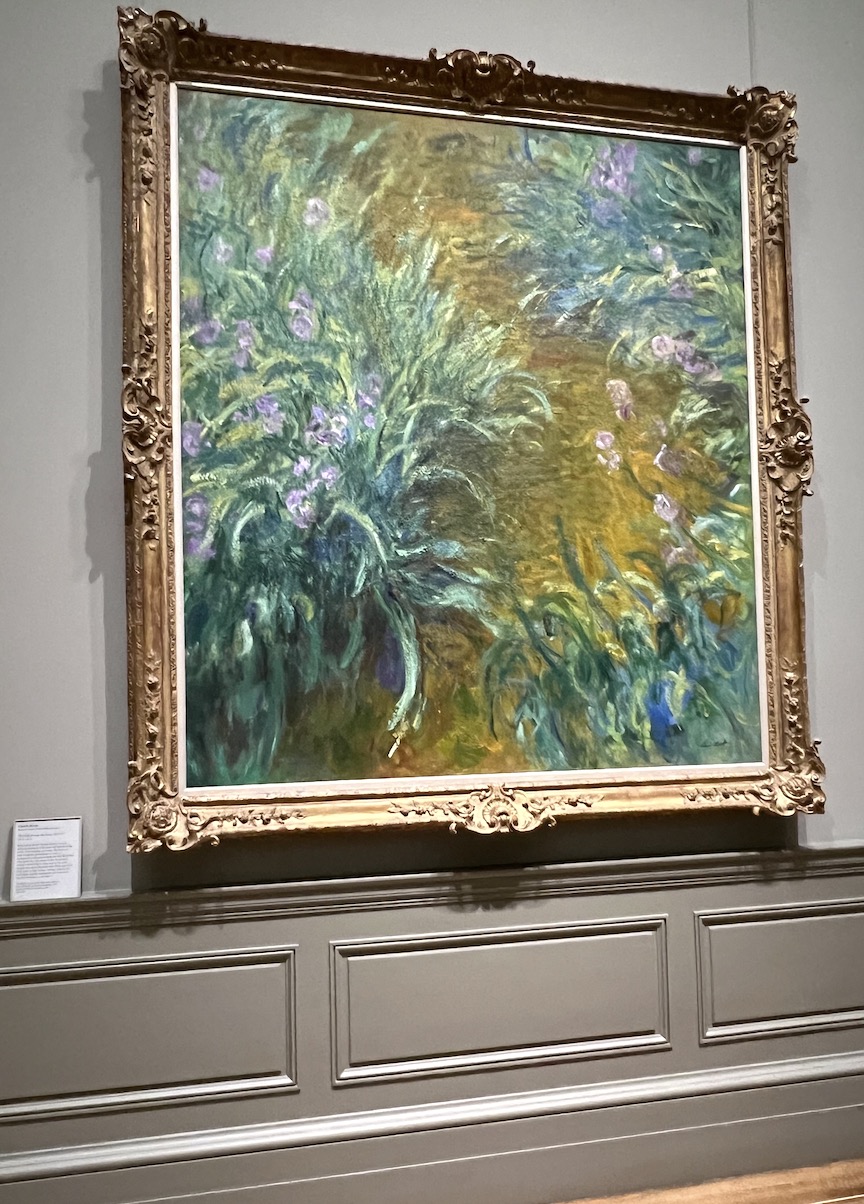
Inside The Metropolitan Museum of Art: another stunning Monet. (Photo: R. Naas)
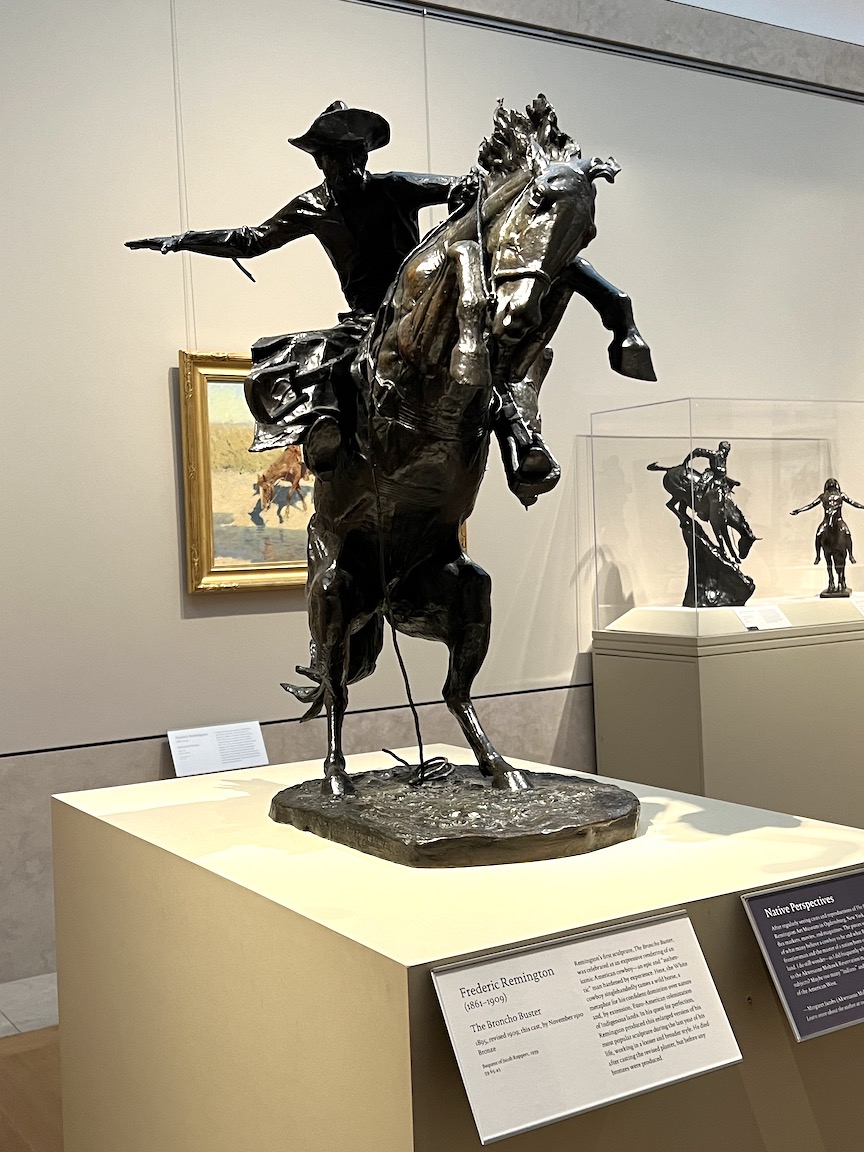
Remington at The Metropolitan Museum of Art. (photo: R. Naas)
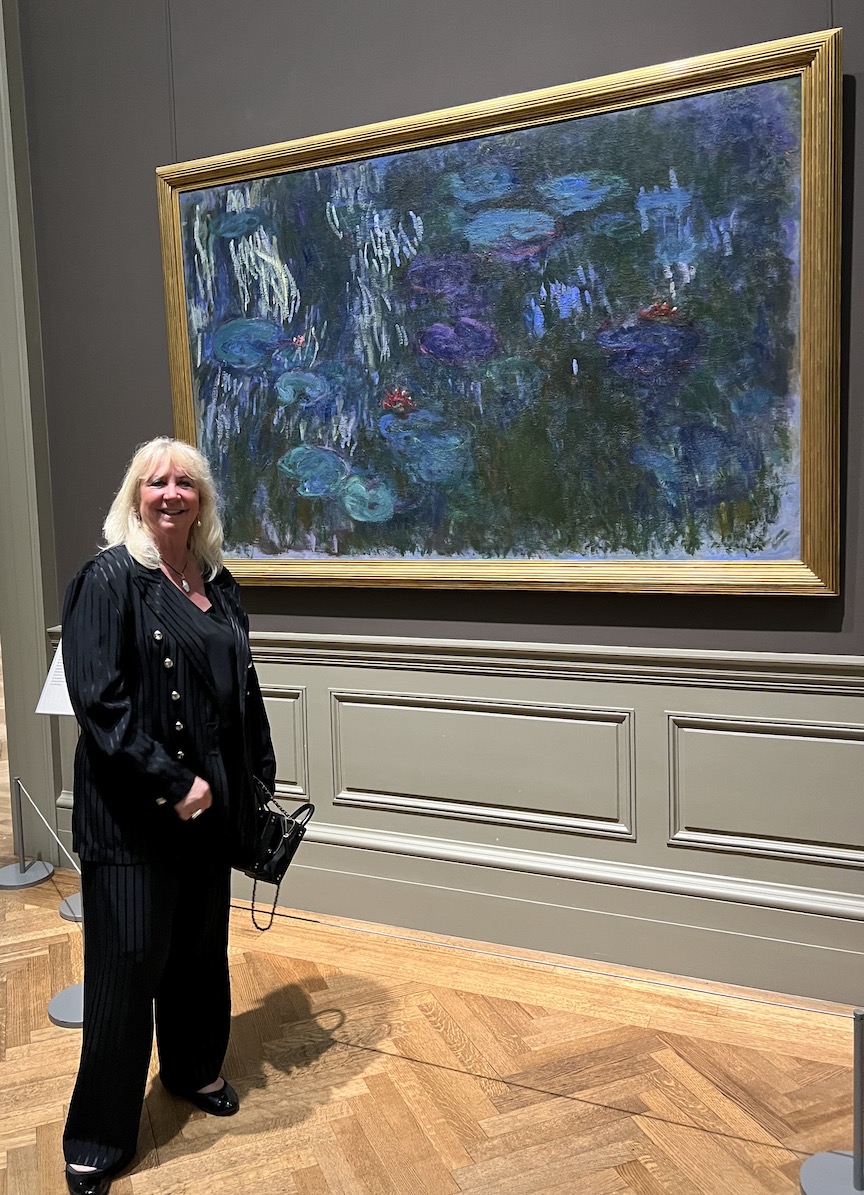
Dark, dreamy colors — a Monet masterpiece. Couldn’t resist having my picture taken. (Photo: Paige Reddinger)
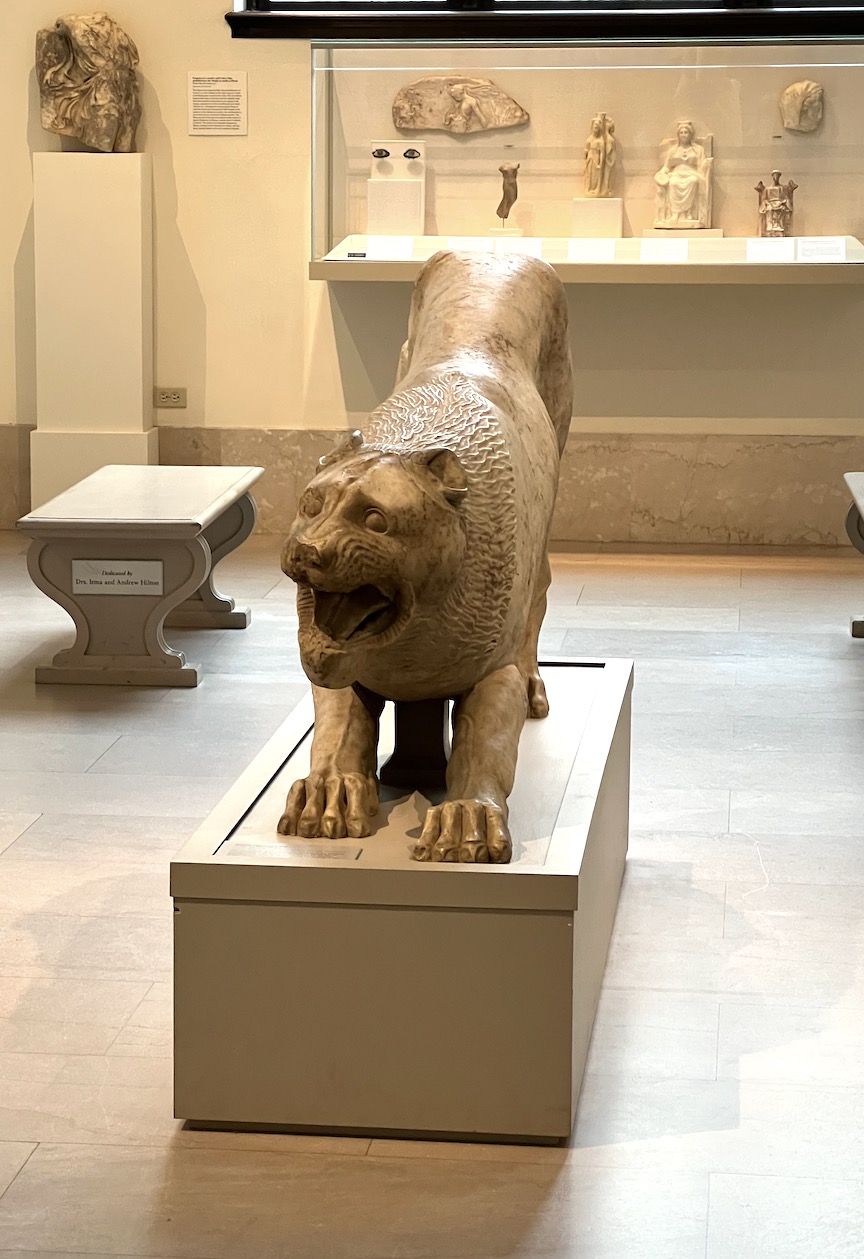
My love of animals and Egyptian art forced me to take this one.





